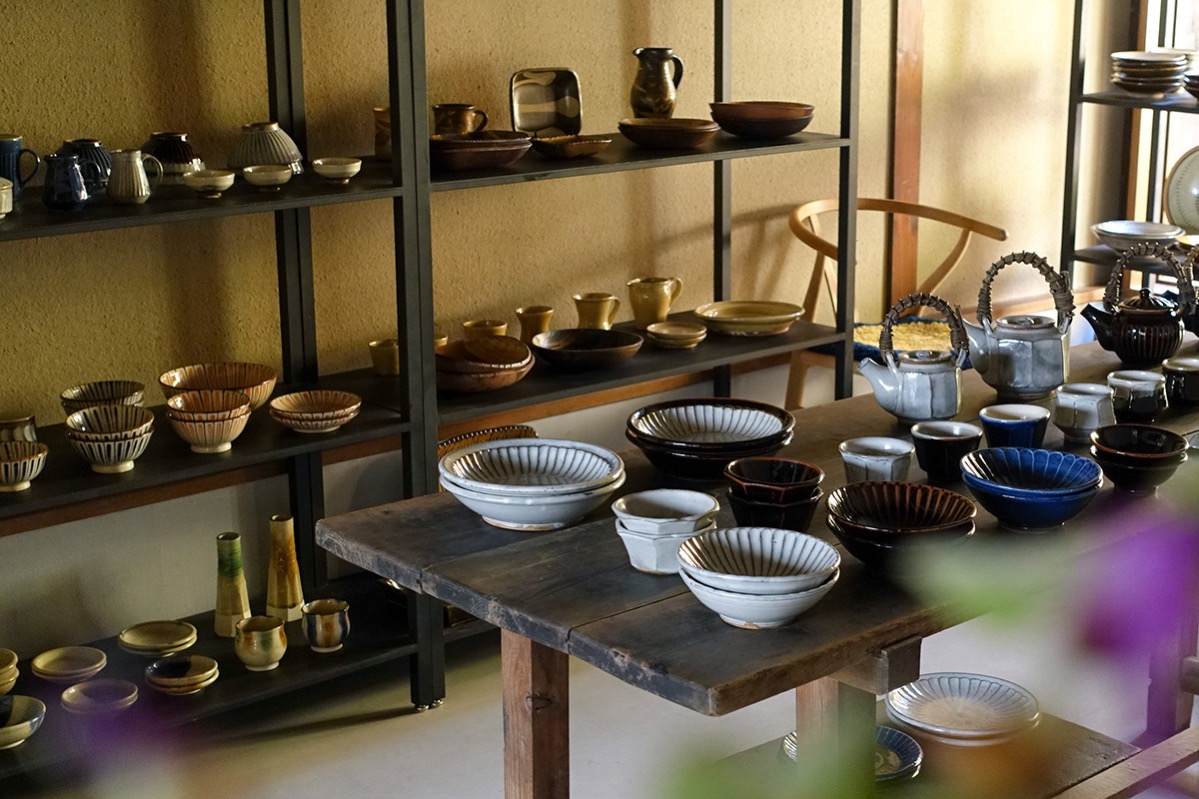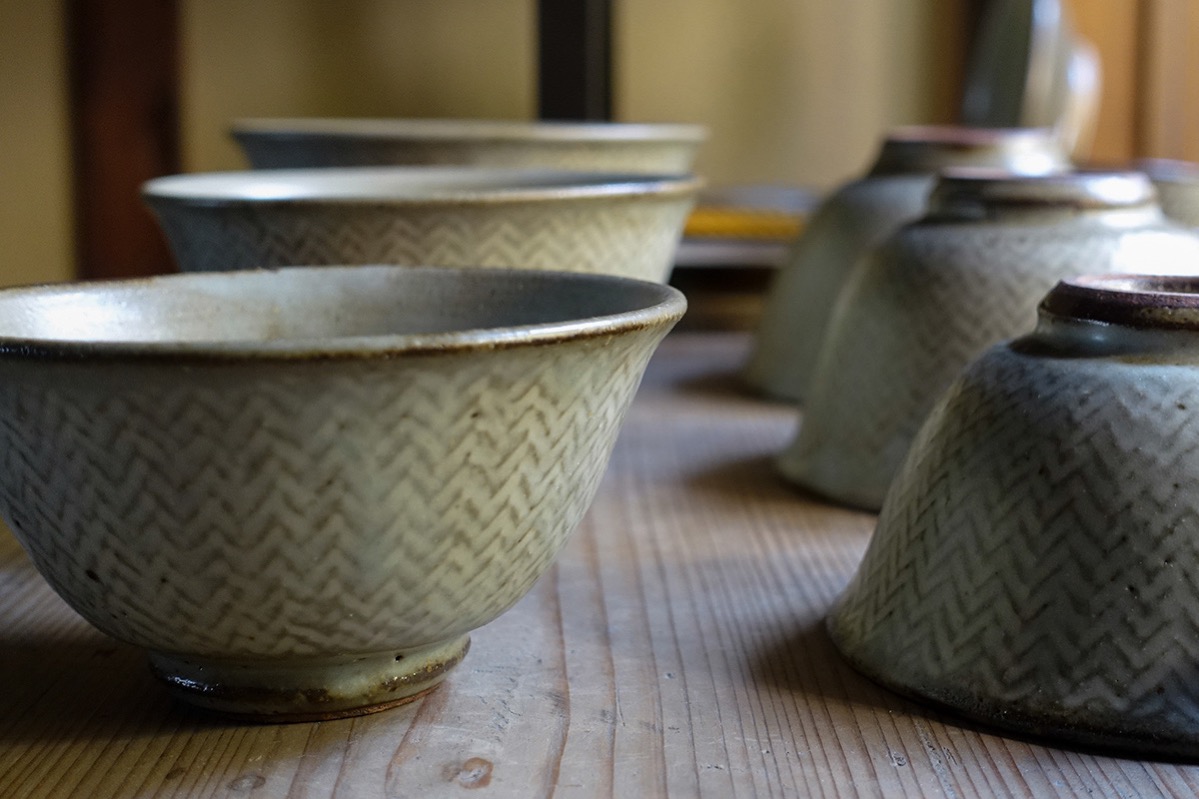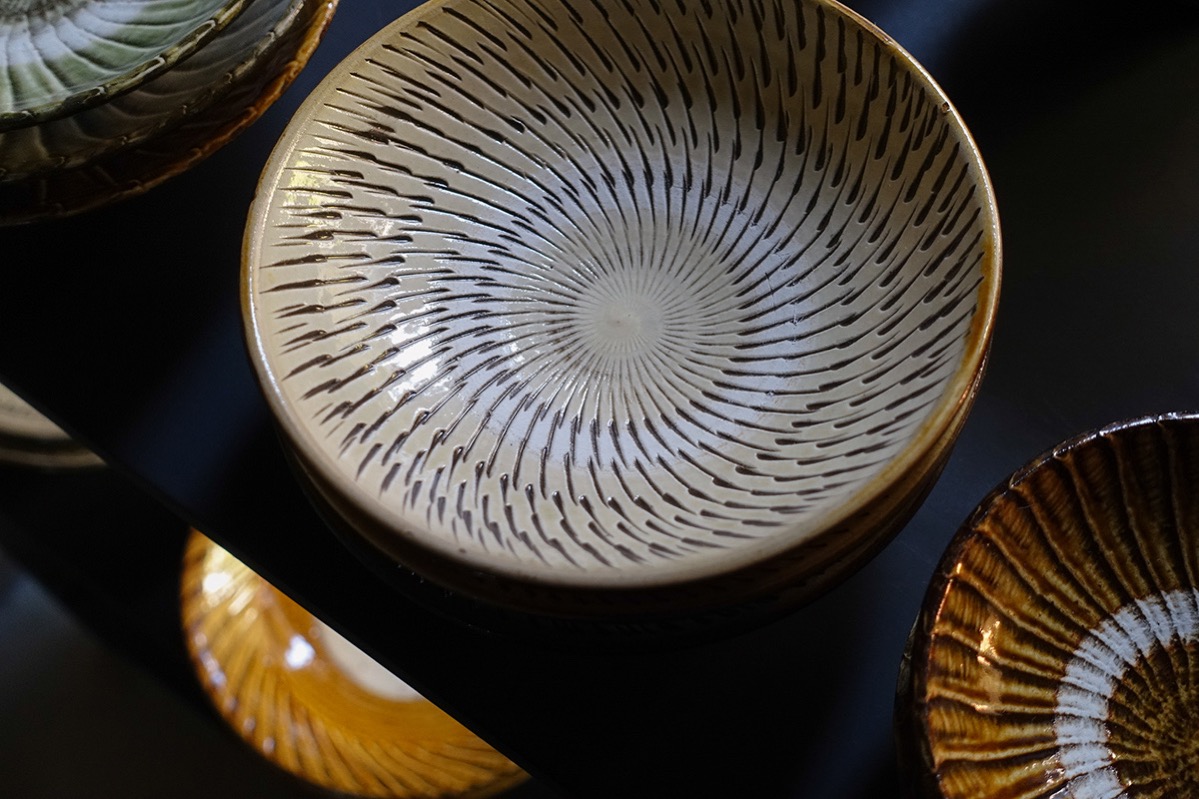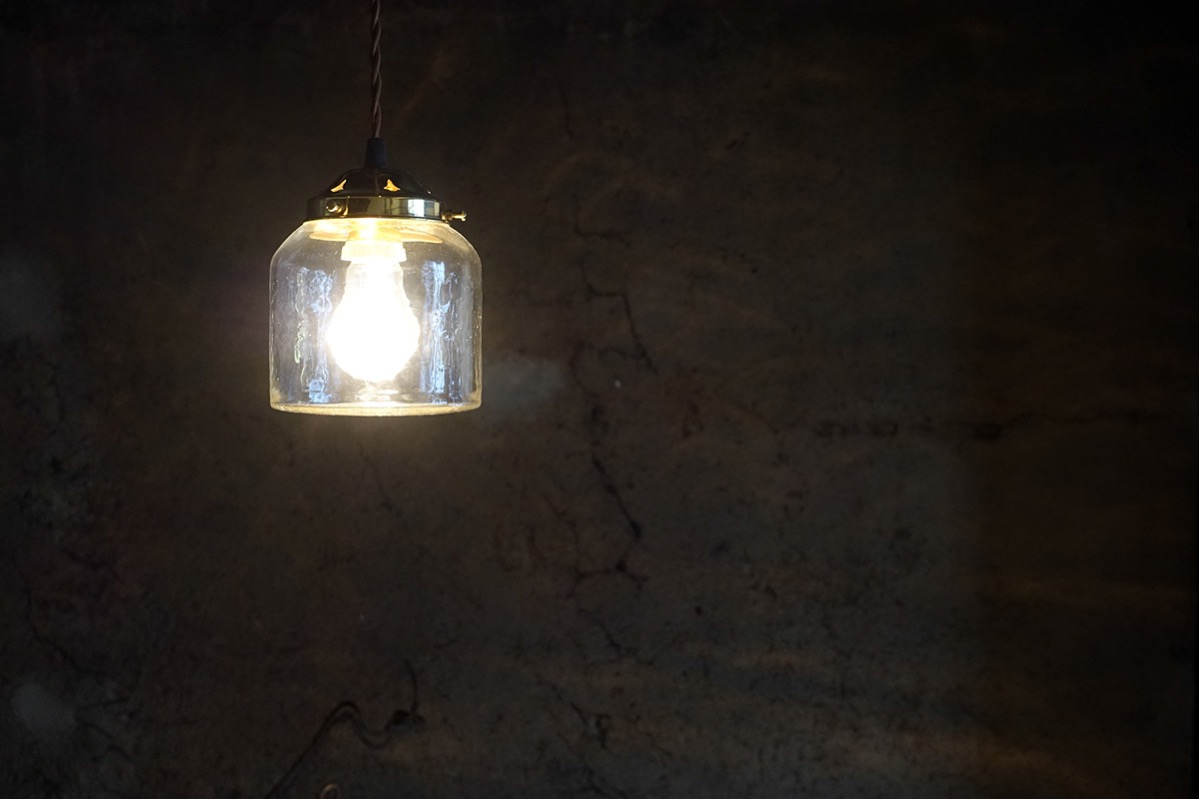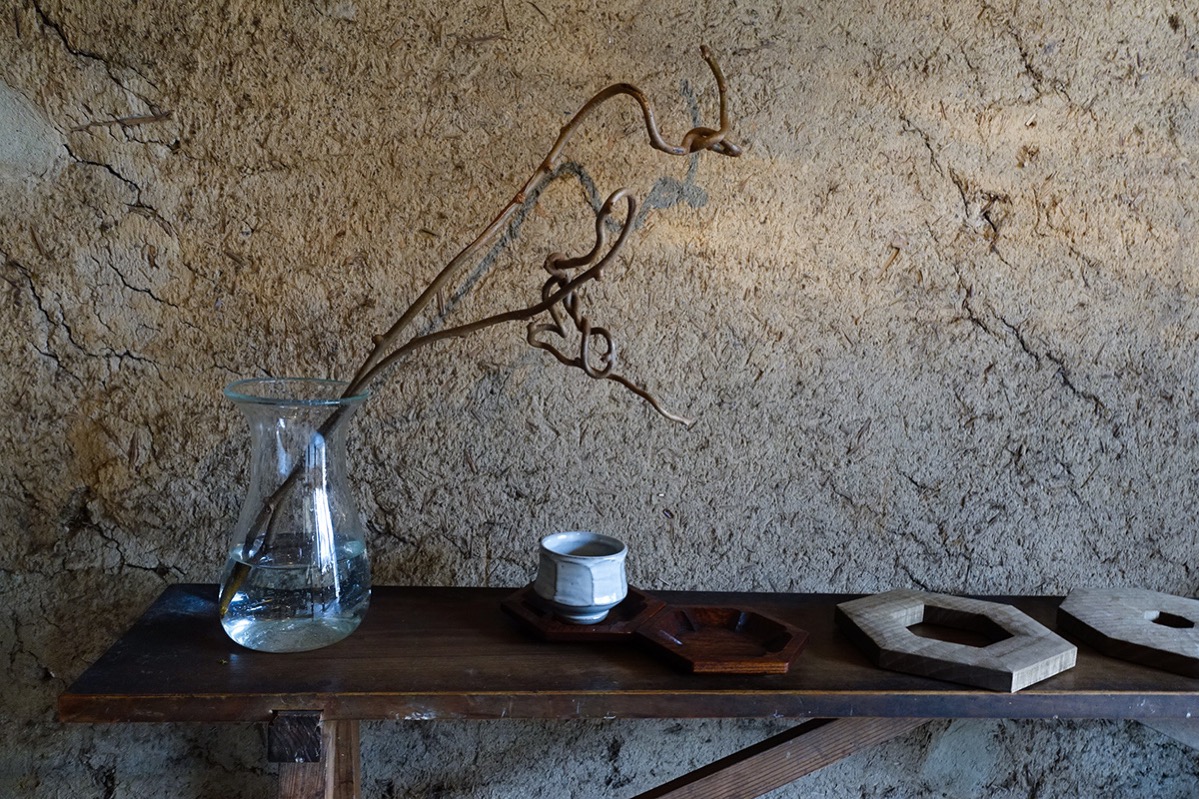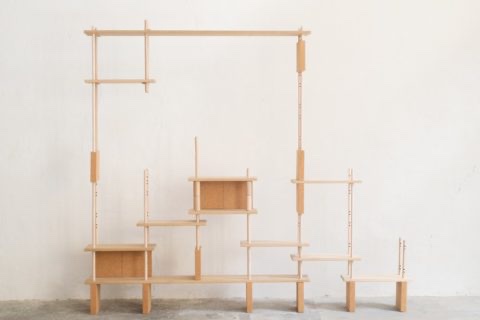
京都市內有很多陶藝店,在內裡總能找到很多與別不同的陶藝家的作品,每個陶藝家都有著各自的世界觀,在各自的展示架上花枝招展。位於北区的Stock卻是有點與別不同的,在裡面沒有哪件陶藝特別鶴立雞群,沒有誰比誰更耀眼,作品聚在一起時,卻深刻流露了店主對生活的追求。
經營Stock的佐藤夫婦於2011年日本東北大地震時居住在東京。地震過後,電力及糧食供應都受影響,大都會裡看似豐足,只是災難一來臨,才發現自己一直以來依賴著別人耕耘。佐藤夫婦重新思考自己一直走來的生活,於大都會裡勞勞碌碌,最終自己究竟得到了甚麼又失去了甚麼。
二人後來選擇遠離繁囂的東京,遷來步調較為悠閒的京都,開展新生活。原本從事室內設計的開設了自己的家品店,售賣的全都是日常生活能夠用到的器物與道具,樸素低調,沒有任何純裝飾性的東西,所有東西都是為滿足基本生活所需。這個的選貨取向,原來是受已故陶藝家河井寛次郎的影響。「某天,我參加了河井寬次郎紀念館的館長河井敏孝(河井寛次郎的孫兒)舉行的茶會,首次用寬次郎先生造的茶碗來喝茶。寬次郎先生的作品個性非常強烈,卻也是為被使用而製造的。那次的經驗很震撼,勾起我對日本民藝的強烈興趣。」佐藤先生說。
民藝運動推祟的「用之美」等深植在佐藤夫婦心裡,他們在籌備Stock的開業時,走訪了日本多個地區的陶窯,如島根的出西窯、湯町窯,以及兵庫的丹波等,為Stock選來的,不少都是民藝品,如小鹿田燒、沖繩燒等,另外也有山田洋次的Slipware及杉本義訓的作品。
別忙著為生活穿金載銀,過於閃亮耀眼,就會看不到尋常日子的美好。著眼於基本生活,點綴細微處,自然過得豐足。這是我從Stock店裡感受到的生活哲學。
Stock
京都市北區大將軍東鷹司町163
Despite how common it is to see a pottery shop in Kyoto, one can still easily run into unique works that explicitly demonstrate the distinct worldview of their creators. Stock, the pottery shop in Kita-ku is perhaps a little bit different; none of the ceramic pieces stands out distinctively, but together they become a collective picture that narrates the passion of the shop owner.
Before opening Stock, Mr and Mrs Satō were living in Tokyo when Japan was struck by the 2011 Tōhoku earthquake and tsunami. Electricity power and food supply were both adversely affected by the earthquake. A feeling of helplessness made the couple realize the abundance they enjoyed in the metropolis was simply a superficial illusion. The Satōs began to wonder what they had achieved and lost in their repetitive life of hard work.
The two of them then decided to leave the bustling Tokyo and moved to the comparatively unhurried city in Kyoto to start their life anew. Utilizing their earlier experience as interior designers, the couple started their own home ware shop that sells daily life utilities. Without any ornaments, items in the shop are all subtly designed purely for the basic needs of life. Mr Satō mentioned that their choice of merchandize is influenced by the late potter Kawai Kanjiro, ‘I tried using tea bowl made by Mr Kanjiro for the first time in a tea party hosted by Kawai Toshitaka, the curator of Kawai Kanjiro’s House and the grandson of the potter. Ceramic pieces made by Mr Kanjiro carry a very strong character, but they are at the same time created for practical use. Startled by that experience, I felt an intensive interest in Japanese folk arts started to grow in me.’
Beauty in utilitarian objects is not only a philosophy promoted by Mingei Movement, but is also a belief that has taken root in the Satōs. To prepare for the opening of Stock, the husband and wife visited many kilns in Japan, for example Syussai Kiln and Yumachi Kiln in Shimane Prefecture, and Tamba in Hyōgo Prefecture. Among many of the Japanese folk arts pieces selected for Stock, there are Ontayaki pottery, Okinawa pottery, as well as Slipware by Yoji Yamada and ceramic pieces made by Yoshinori Sugimoto.
Chasing for a luxurious and flamboyant life blinds one from recognizing the beauty of ordinary life. Living is pleasurable when one learns to appreciate unapparent details in a basic daily life. This is the philosophy of life I have learnt from Stock.
Stock
Taishogunhigashitakatsukasacho 163, Kyoto Kita-ku, Kyoto
